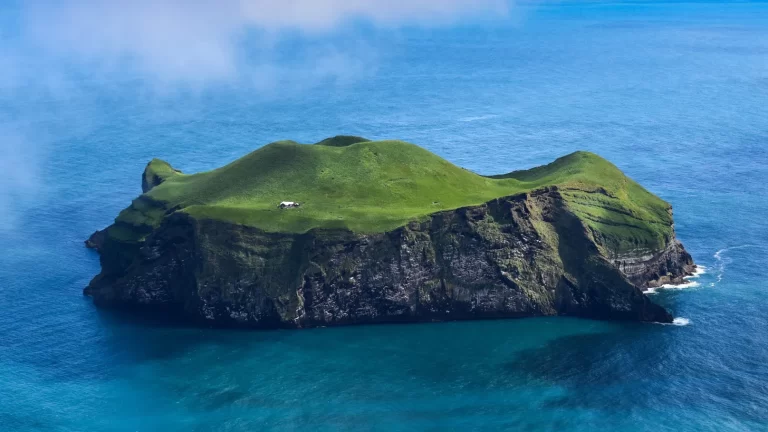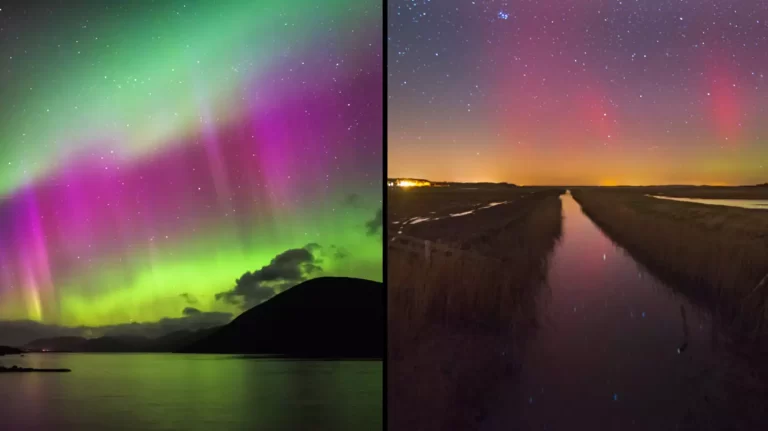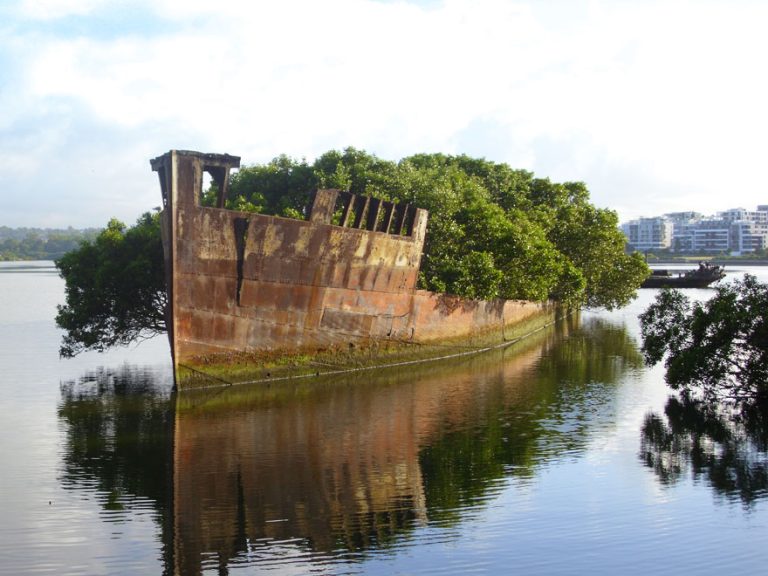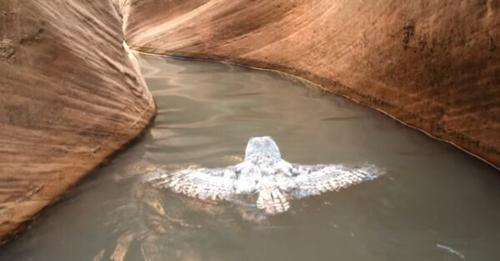Giant “Raft” of Floating Lava Rock in Pacific
A huge “raft” of very lightweight rocks called pumice is floating across the South Pacific Ocean. These rocks came from an undersea volcano and are expected to reach Australia in seven to 12 months.
Pumice is a very light rock formed when super-hot, liquid rock is ejected from a volcano. As the rock cools quickly, millions of tiny bubbles form, creating a light, foam-like rock that often floats.
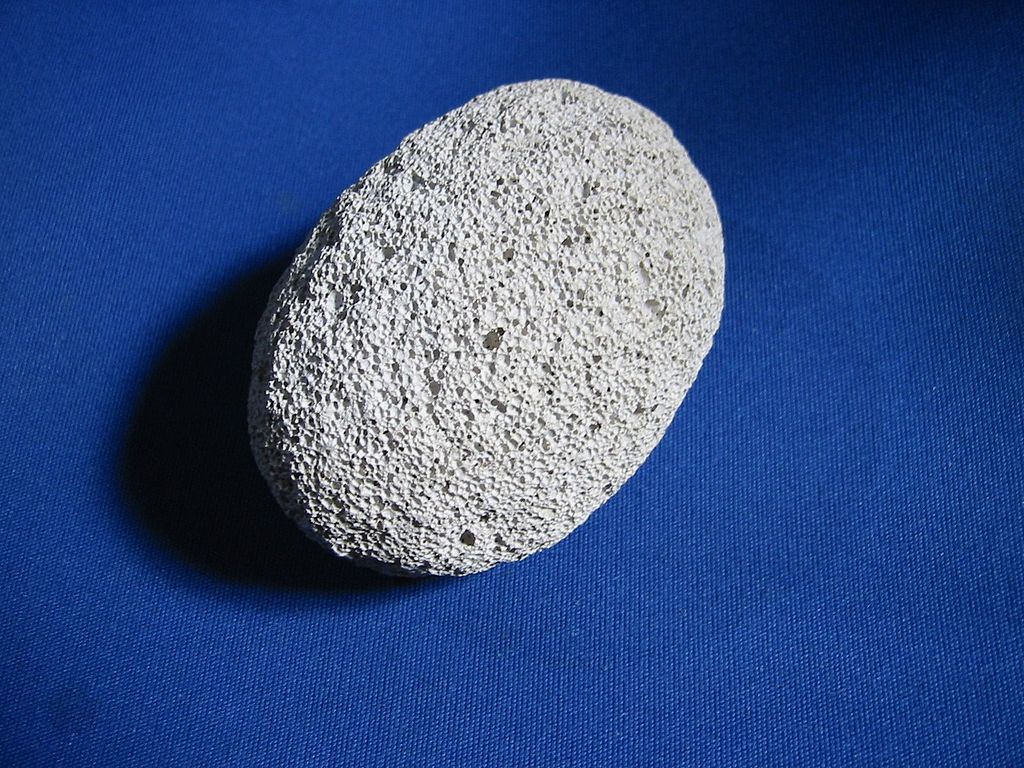
(Source: deltalimatrieste [Public domain], via Wikimedia Commons.)
The pumice raft spotted in the South Pacific is enormous, covering around 58 square miles (150 square kilometers). One part of the raft is about 1.5 miles (2.5 kilometers) wide and 22 miles (35 kilometers) long. Another part is about 31 miles (50 kilometers) long.
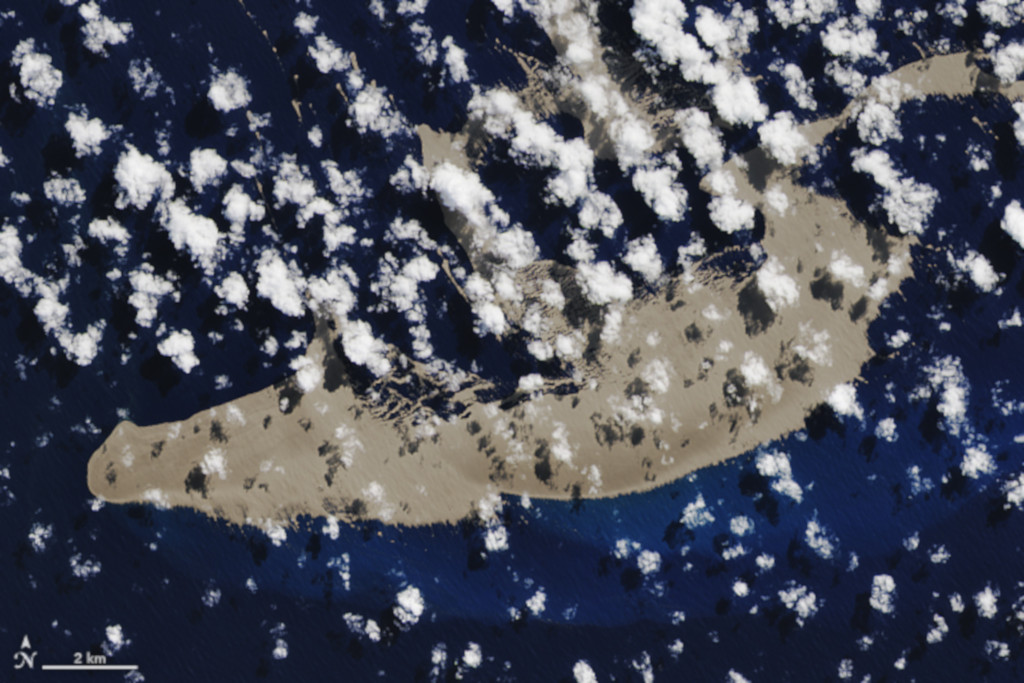
(Source: NASA Earth Observatory.)
The raft was first noticed by sailors on August 9, about 70 miles (113 kilometers) from Tonga. A small ship called “Olive” came across “ribbons” of pumice on the sea’s surface. One of the ship’s officers, Rachel Mackie, said the ship was soon “surrounded as far as the eye could see.”
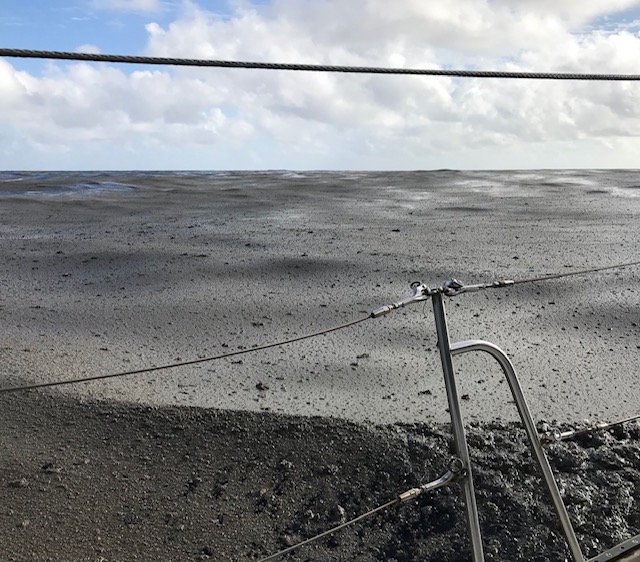
(Source: Rachel Mackie, OliveOcean.com.)
Ms. Mackie reported that the raft was about a foot (30 centimeters) deep and had some large lumps as big as 32 inches (80 centimeters) across. It took the ship two hours to pass through the pumice.
On August 15, a sailing boat called “Roam” also encountered the pumice. Sailors Michael Hoult and Larissa Brill found pumice stones of various sizes – some as small as marbles and others as large as basketballs. They said the raft covered the sea so completely that they couldn’t see the water.
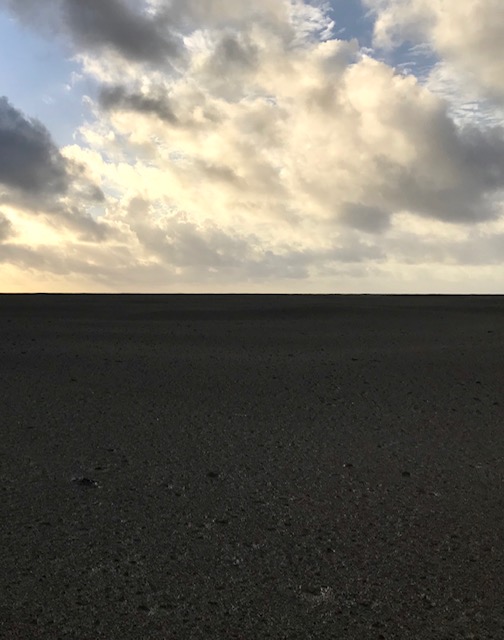
(Source: Rachel Mackie, OliveOcean.com.)
Both boats noticed a smell of sulfur, which is closely associated with volcanoes and smells a bit like matches.
Scientists believe the pumice raft came from an underwater volcano that erupted on August 7. This volcano also erupted in 2001 but has never been named.
As the raft moves with the ocean currents, it is slowly breaking up and heading toward Australia.

(Source: NASA Earth Observatory.)
Scott Byron from Queensland University of Technology in Australia says the pumice will collect various tiny creatures and plant life as it drifts across the ocean. He mentions it may bring along “algae, barnacles, corals, crabs, snails, and worms.”
Byron hopes the pumice raft might help Australia’s Great Barrier Reef, the world’s largest coral reef system. This vital underwater area has lost over half of its corals since 1985, mainly due to climate change.

(Source: Wikipedia.org.)
The pumice raft could bring new, healthy corals, potentially helping to restore the reef. However, some of the creatures hitching a ride on the pumice could harm the reef or other areas in Australia.
The sailors from the Roam are bringing pumice samples to Mr. Byron for further study.
Also read:
The Mysteries of Veryovkina Cave: Earth’s Deepest Known Abyss
9,500-year-old Tree Found In Sweden Is The World’s Oldest Tree.

